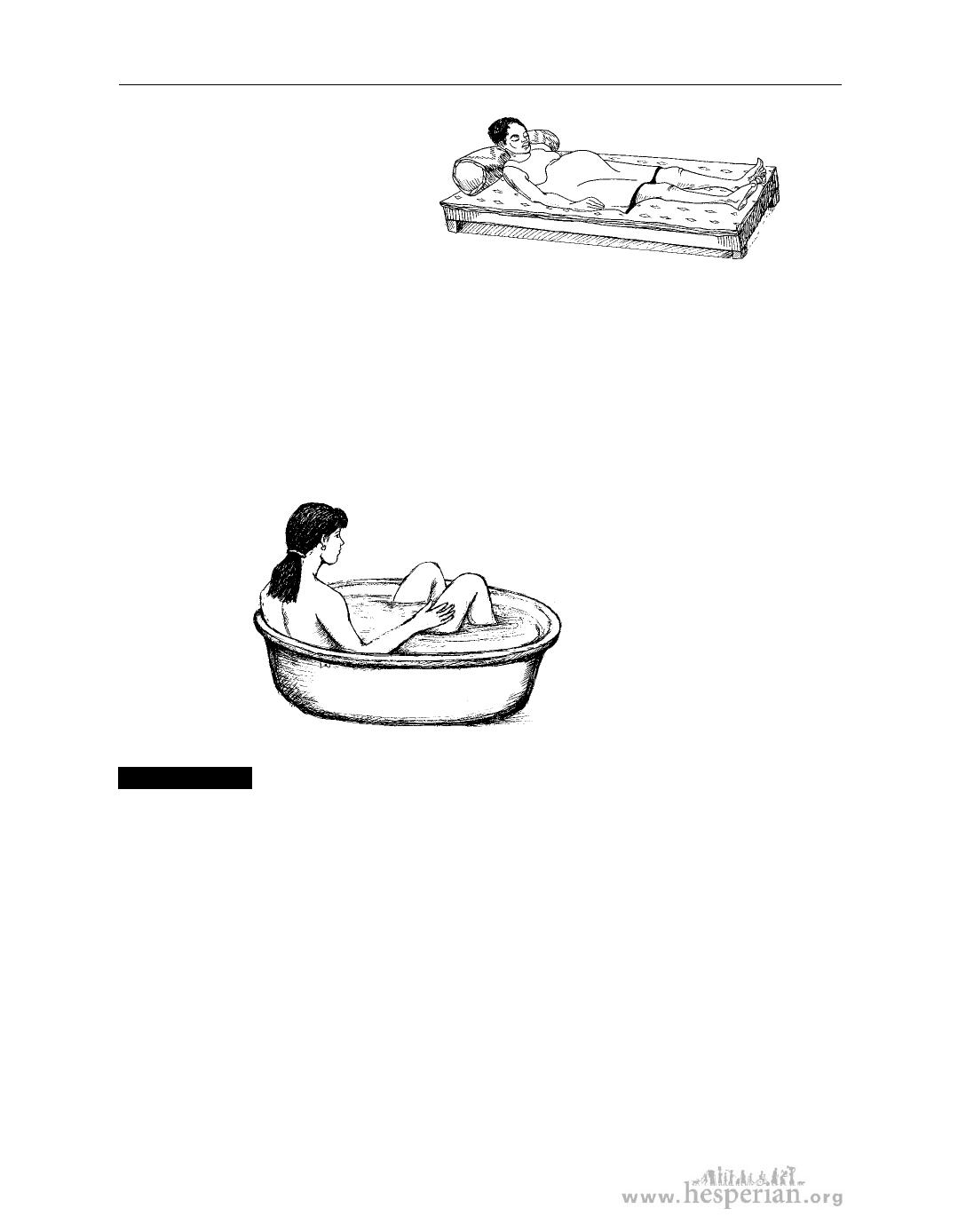
226 chapter 10: Pregnancy
If the back or the whole body
is affected by muscle spasms,
put something under the head
and shoulders to bend them
forward a little. This helps to relax
stiffness in the whole body.
• Apply warm soaks to the tight muscles or, if possible, sit or lie in warm water.
Be careful not to burn the skin or overheat the body, especially if you cannot feel
hot or cold things against your skin. Too much heat can cause damage to the
unborn baby.
• Gentle stretching exercises done 2 to 3 times each day can help reduce tight muscles.
• Weight-bearing exercise, like standing up, also helps keep muscles strong and
reduces muscle tightness.
Sitting in clean, warm
water will help muscle
spasms relax.
IMPORTANT As a general rule: Do not massage spastic muscles. In some
countries, people and even therapists use massage or rubbing to relax spastic
muscles. Although massage often helps relax muscle cramps, or tight muscles from
other causes, in spasticity, massage usually increases the muscle tightness.
Back Pain
Most pregnant women, whether or not they have a disability, get back pain,
especially in the weeks just before the baby is born when the belly is very big
and heavy. Most often this is because the muscles in the belly are stretched and
weakened during pregnancy, and the back muscles have to work harder.
Women with some physical disabilities seem to get back pain that is more severe
and that happens earlier in the pregnancy. Even women who have no feeling in the
lower body often notice back pain while they are pregnant.
A Health Handbook for Women with Disabilities 2007